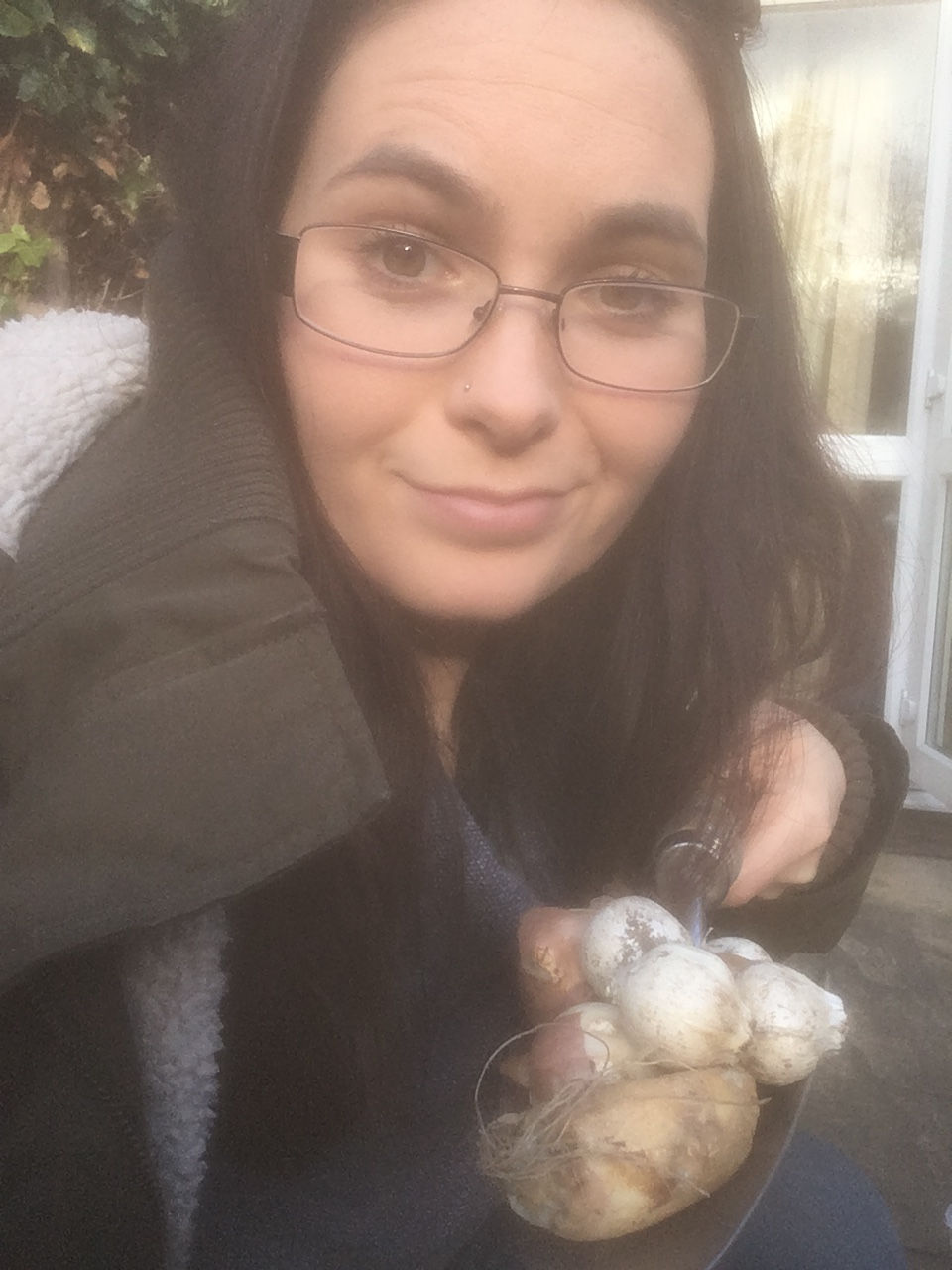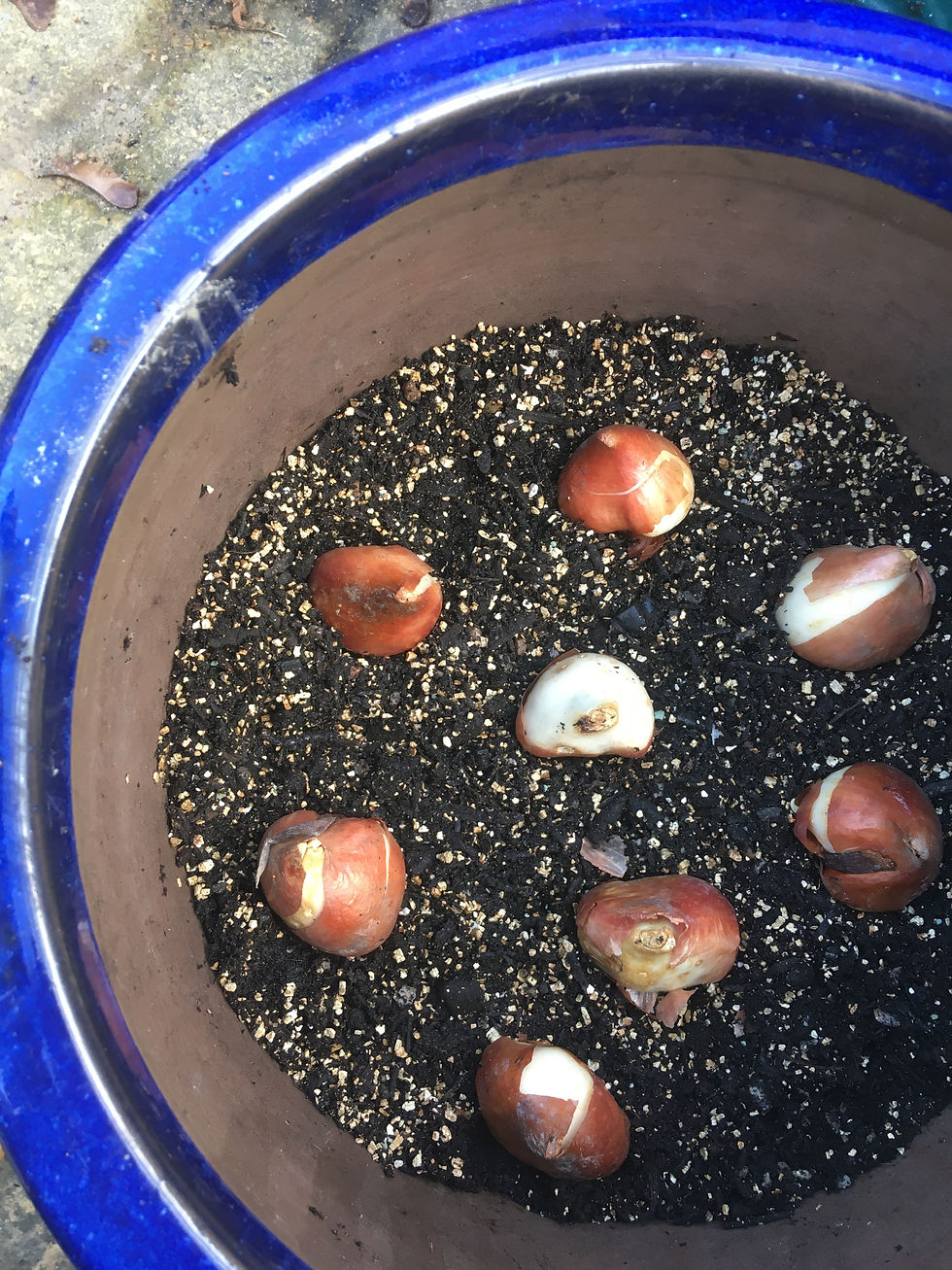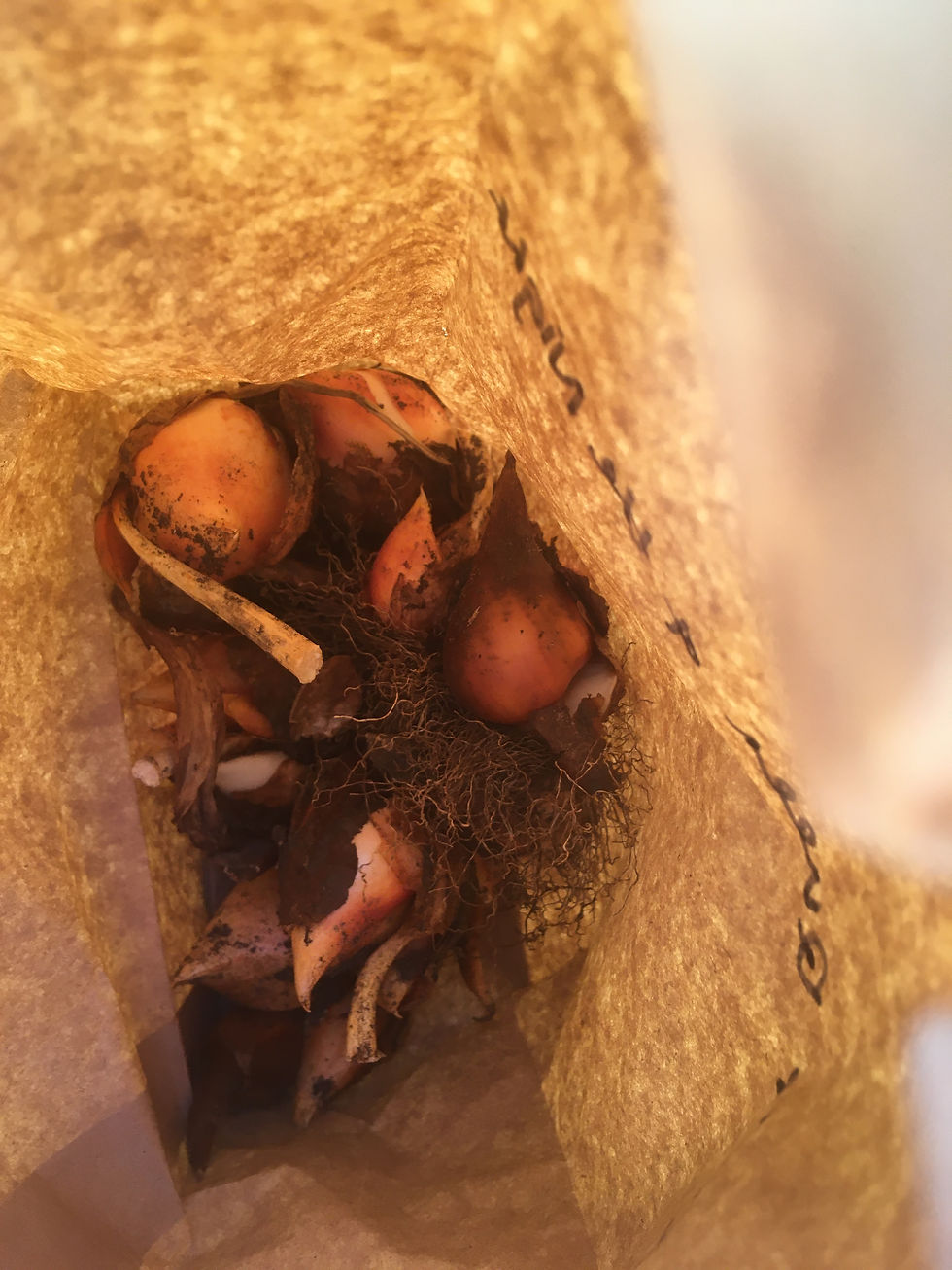As spring is almost upon us, I am eagerly checking my pots for signs of the bulbs I planted in the autumn. Bulbs are such an easy and fun way to add colour to a garden, I encourage anyone to give them a go. It occurred to me that a post on growing bulbs might be in order, and as we're almost into growing season, now seems like a great time to do it. So if you are interested in growing bulbs, and would like a bit of encouragement, read on...

What do we mean by bulbs?
Bulb plants refer to plants that possess an underground storage vessel (the bulb) which produces the roots, leaves and flowers. Famous examples include daffodils, tulips and alliums, but in truth there are lots of bulb plants out there, including those that flower in the summer (Agapanthus and lilies), autumn (Nerines) and even mid-winter (winter aconites). Since spring is almost upon us, this post will focus on spring flowering bulbs.
Why plant bulbs?
There are so many reasons:
They are easy and straightforward to plant
Once in the ground, you don't really need to do anything, except water if you've planted the bulbs in a pot. Everything the plant needs in terms of nutrients is already in the bulb.
The vibrant green shoots of spring-flowering bulbs pushing up through the soil will be the most uplifting sight in late winter, and the flowers, when they arrive, are perfect.
Bulbs naturally multiply in time, giving you a chance to divide and replant them for even more flowers.
There is a huge amount of choice on the market.

Planting bulbs:
Planting bulbs really couldn't be simpler. There are just a few little things to remember:
Use a well-draining compost. Bulbs do not like to sit in soggy, waterlogged soil, and are prone to rot in these conditions.
Plant the bulbs the right way up, with the bottom down and tip up. Don't worry too much about this though as many bulbs are clever enough to root and shoot the right way even if planted the wrong way!
The general rule is that the depth of the planting hole should be three times the height of the bulb. So larger bulbs should be planted deeper than smaller ones. Again, don't fret too much about this. Most bulbs aren't fussy if planted a bit shallower than ideal.
Theoretically, everything the plant needs to flower is already in the bulb, but if I am replanting bulbs in a new place, or starting newly-purchased bulbs, I like to add a bit of bulb starter to help them establish. You don't have to to do this though.
You can plant bulbs in pots and containers as well as in the ground. In fact, sometimes pots make a better option, as once the flowers have faded in late spring, you can move the container to a less coveted spot. You can also plant lots of different types of bulbs in the same container for a mixed display. Just make sure you are still planting them at the right depth for their size. In the horticulture world, this is known as bulb lasagne.
Squirrels are devils for pinching newly-planted bulbs out of pots. Depending on the squirrels' determination, you may have to resort to making guards out of chicken wire to protect your bulbs. But before you come to that, a simple layer of gravel on the soil surface might work just as well.
The flowers have faded… now what?
You have two options. You can treat the bulbs as you would a summer annual, and once the flowers have finished, pull the whole plant up to dispose of. You might then buy new bulbs and plant them in the autumn for flowers the following year.
However, if you enjoyed the flowers, and more to the point, you don't want to repurchase bulbs, then gently remove the spent flower head so that the plant can focus it's energy back into the leaves and stem. You will then need to leave the foliage to die back naturally. This feeds the bulb for it's flowering performance next year. Wait until the leaves and stem have started to brown and wither away, usually by midsummer. You can then go along and cut them back to ground level.
The frustrating thing about bulbs is that the old foliage quickly starts to look untidy, and yet it is best to resist the temptation to cut it back straight away. If you can't stand the unsightly foliage in that gap between late spring and midsummer, you could just pull up the offending plants, and replant new bulbs in the autumn.
Or you could grow other fast-growing plants around them to detract attention away - Alchemilla mollis, or Lady's Mantle, is a great perennial for the job! Alternatively, you might gently lift the bulbs with a fork and replant them in spare plant pots, foliage in tact. They can be left somewhere sunny, minding their own business until the time comes to cut them back.

Storing bulbs:
Storing bulbs isn't necessarily something you have to do. Some bulbous plants, such as daffodils, alliums and Muscari (Grape Hyacinth), naturalise really well in the UK. Once planted, you can generally leave them to do their thing and they will come back year after year. Tulips however can be temperamental - in some areas of the county, they naturalise well, in others, not so much. They don't always cope with heavy, wet soils, so you may need to experiment.
Sometimes, it is recommended that you lift bulbs once they have gone dormant. This is more likely to be appropriate for summer flowering bulb plants, as they are often tender. However, you may choose to do this for tulip bulbs too. You could also do this if you're planning to move the bulbs to a different spot for the following year.
For spring-flowering bulbs, the dormancy period starts begins in the summer, or when the foliage has died away. You can then lift the bulbs out of the ground or pot with a fork or hand trowel, and place them somewhere cool, dry and dark until it is time to plant them again. I generally let the bulbs dry out a bit before I store them away in labelled paper bags. Before storing them, I check them, and throw any away if I see signs of disease, mould or damage.
Hopefully this post has given you spring fever and got you itching to start planting some bulbs yourself. The official time of year to plant loose spring flower bulbs is September to December, or before the weather gets so cold that the ground freezes. So as long as the ground isn't frozen or waterlogged, you can still plant spring bulbs now - although you may have a slightly later show of flowers.
If you can't get hold of any loose spring flower bulbs from your local garden centres and suppliers, the chances are they will have a wide selection of pre-planted bulbs for you to choose from, some of which may already be shooting.
Keep a look out for my next post where I will share some of my favourite bulbs that flower in spring. Hopefully it will give you some further inspiration to make your borders sparkle this coming season.
Thank you for reading.
Have a great week.
Comments